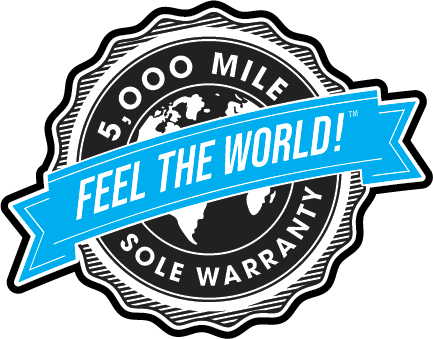Harvard’s Guide to Healthy Feet – Are you doing what they say?
Our local newspaper, the Denver Post included an insert, The Harvard Health Guide to Healthy Living.
Lots of great info in there, but my favorite is the section, Keeping Your Feet Healthy.
What does it recommend?
Check out this video for a few highlights and my commentary. And if you want to read the transcript instead of watching, it’s below the video.
What do you think? Are you doing what Harvard recommends?
Add your comments, below.
Transcript
Hi, Steven Sashen here from xeroshoes.com to talk about something that I got in the newspaper as an insert the other week. It is the Harvard Health Guide to Healthy Living. There’s a lot of great information in here but there’s one section that I really want to talk about, and let’s take a look at that, shall we?
It’s the “Guide to Keeping Your Feet Healthy.” Now, in this guide to keeping your feet healthy, there are a couple of highlights that I really want to point out and here’s the first one.
Read down here under Foot Fitness, “Exercising your feet on a regular basis not only improves overall foot health but may reduce your risk for injury,” and here’s the highlighted part, “Walking is the best overall foot exercise. When you walk, you put your foot through its full range of motion from the time your heel hits the ground until you lift off with your toes.”
Okay, first of all, love the idea of putting your foot through its full range of motion, love the idea of walking, have a big issue with that phrase “heel hits the ground.” You don’t want your heel to hit the ground. You want your heel to contact the ground. You want to use your foot. You want your heel to touch the ground but you don’t want it slamming down.
So what you end up wanting to do, what you actually want to do, is have your foot land kind of underneath your body rather than way out in front of your body. If you reach way out with your foot, you’ll slam your heel into the ground and that’ll cause what’s called an impact transient force spike through all of your joints.
What you want to do instead is let your foot land underneath you. You may be a little flatfooted, you may land on your midfoot, you might even land on your forefoot – suffice it to say, you don’t want to slam your heel. You don’t want to hit your heel. You want your heel to contact the ground naturally.
Now, the next part, “letting your foot go through its full range of motion.”
In order for your foot to go through its full range of motion, you need a shoe that lets your foot go through its full range of motion. If you have a stiff shoe with a really high heel, it can’t go through its full range of motion.
With a high heel, your heel’s already way up and you don’t get that plantar flexion. You don’t get that toe coming towards your knee that is part of the full range of motion in your ankle. And if the shoe itself is stiff, your foot can’t move properly.
You have one-quarter of the bones and joints of your entire body in your foot and ankle and you want to have a shoe flexible enough to take advantage of that.
So for example, our Xero Shoes. This is our Xero Shoes Prio. It is a running fitness shoe. People use this for road-running, trail-running, CrossFit, yoga, gym-going, pretty much anything you can think of. Of course, casual wear as well.
And when it comes to not elevating your heel so that you can get that full range of motion and the plantar flexion—you can see the heel is not elevated—when it comes to letting your foot bend, move and flex naturally, well, let’s just do this. Yeah, that’ll do it.
And that amount of flexibility is not unique to our Prio. All Xero Shoes do that. This is our Z-Trail sandal. Think Chaco, Teva, Keen, but this thing weighs one-quarter as much and is much, much thinner and, as you can see, does that same crazy flexible rolling thing that lets your foot move through its full range of motion.
Even our casual shoes—this is our Hana men’s casual canvas shoe—same thing, just as flexible as all Xero Shoes because natural foot motion is so important to us.
Thank you, Harvard, for telling everyone else that it’s important for them as well.
Alright, let’s go into the next point: “Basic steps to help prevent many foot problems – buy shoes that fit well with low heels and plenty of room for your toes.”
Well, I already talked about the low heel part. Not only are Xero Shoes a non-elevated zero-drop heel, but they’re also non-elevated. This is a low-to-the-ground sole for balance and agility.
You might hear about some shoes that are zero-drop—means they don’t elevate your heel, which messes with your posture—but they’re still an inch, two inches off the ground. You don’t want that. You want something low to the ground for balance and agility.
And when it comes to plenty of room for your toes, think about most of the shoes that you have that are pointy and squeeze your toes together – Xero Shoes, on the other hand, have a nice wide toe box so your toes can spread and relax and splay and move naturally.
And again, true on our sandals, true on our casual shoes. It’s one of the core principles we believe in, is natural fit, letting your toes bend, relax, flex, and splay naturally.
Let’s take a look at the last point: “Make sure your shoes provide enough support but allow your feet to breathe.”
Okay, let’s talk about support. Many people think they need arch support. “You must have arch support.” You go to a doctor and he’ll tell you, that if you have any problem, you need arch support.
Well, what does support actually do? It actually stops your foot from moving. Go back to that putting your foot through its full range of motion. When you have something supporting your arch, it can’t actually move through the full range of motion.
More, think about the idea of support in general. You’re keeping the foot from moving. You’re basically putting it in a cast.
Imagine putting your arm in a cast. When it comes out of the cast, it’s not stronger, it’s not healthy, it’s not flexible. It’s weak. It’s atrophied.
In fact, there is a company that had a trade show booth next to us. They made insoles for your shoes and they had a drawing of a bare foot and then a drawing of a bare foot with their insole thing, and it said “37% less stress, instantly!”
And I said, “By stress, are you measuring muscle activation with an EMG, an electromyograph?” And they said, “Well, yes,” very proudly.
And I said, “So what you’re saying is, the moment I step on that insole of yours my muscles are working 40% less, so I’m getting almost 40% weaker just by standing on that insole. Wouldn’t it be better if I had 100% less stress by putting my foot in a cast or a foot coffin and never moving it at all?” and they did not have a good answer for that.
An arch — think about it — architecturally, it is the strongest structure there is. You can put enormous amounts of pressure on it from the top and it’s totally stable. What makes an arch fall apart? Supporting it, pushing it up from the bottom, the whole thing falls apart.
You don’t need arch support, 99.9% of people. You don’t need arch support. You need strong arches. Whether you have flat feet or high arches, strength is the important thing, not support.
And the way you get strength? Let’s go back to where it says walking is one of those best forms of exercises. Move your foot through the full range of motion.
Running, too, as long as you can move your foot through its full range of motion. So that’s my little rant about support.
And let’s talk about breathing. Breathing isn’t just about having a breathable upper so that you can get air in there, which these have. It’s just about letting your foot have the space to move.
That’s why “breathe” is in quotes.
And again, nice wide toe box, nice and wide across the midstep as well, or the instep as well. So Xero Shoes are designed so that you get a great comfortable fit that lets your feet move naturally.
So that’s the basic thing I wanted to share with you. I want to thank Harvard for putting out the Harvard Guide to Health Living and for having people who are wonderfully smart and talk about actually using your feet naturally instead of binding them up in foot coffins and having them get weaker and weaker over time.
If you have any questions, drop us a line or check out Xero Shoes at xeroshoes.com.
And as we always love to say, Live Life Feet First”
The content of this post does not constitute and is not intended to be a substitute for professional medical advice, diagnosis or treatment. Always seek the advice of a physician or other qualified health provider with any questions or concerns you may have about your health or a medical condition.






